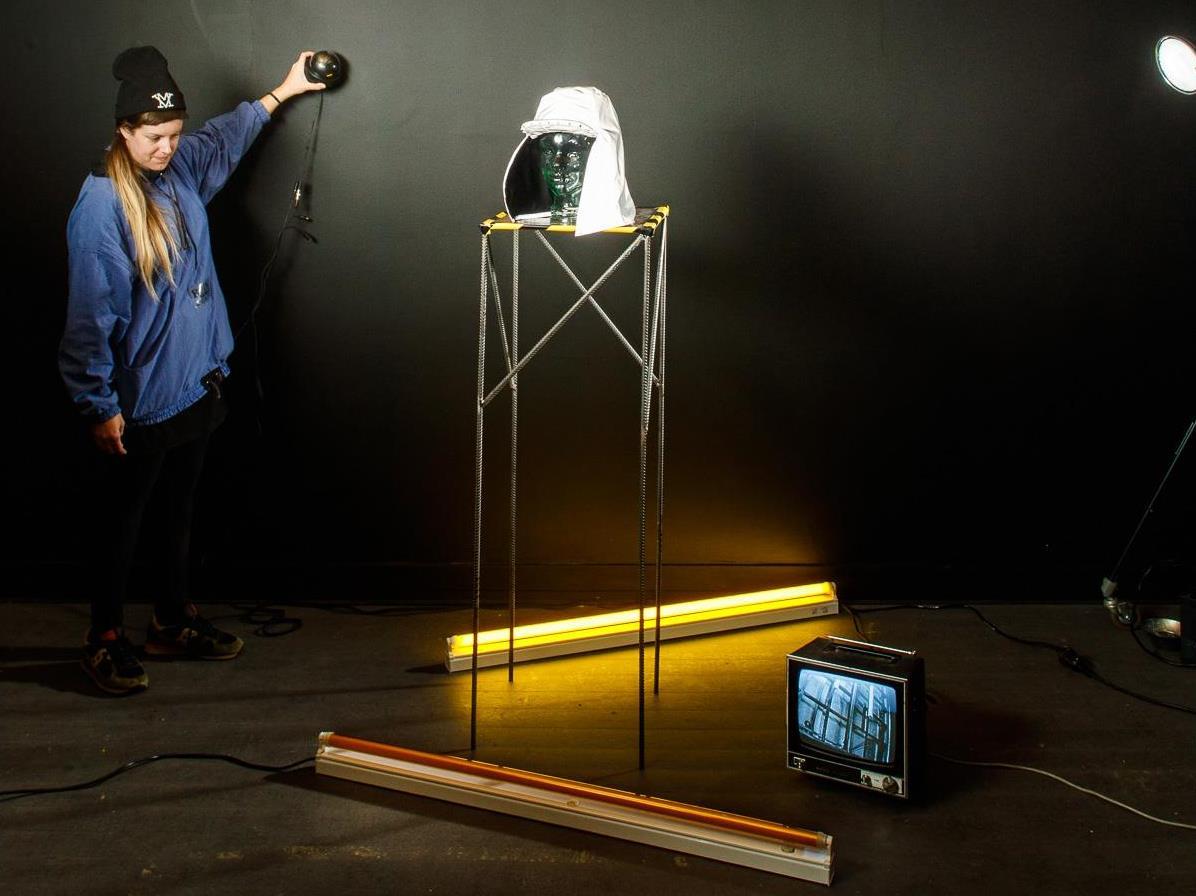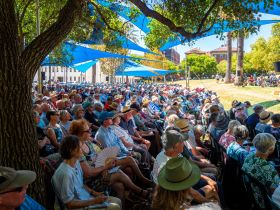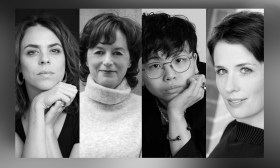Current student Alycia Bennett with her installation for the 2016 Graduate Exhibition at Adelaide Central School of Art. Photo by James Field.
Students love Adelaide Central School of Art. Results from the 2016 national QILT Student Experience Survey identify the School the best art school in South Australia when it comes to the student experience. At a national level, the School placed second by less than one per cent.
“What this result demonstrates is that our commitment to intensive studio-based teaching and small class sizes is valued by students. They feel like they are part of a well-supported community and not just a face in a crowd,” says Ingrid Kellenbach, the School’s CEO.
The survey also recorded the School as having the highest results for Creative Arts courses in SA in the areas of student support, teaching quality, skills development, and learner engagement.
At the School’s Open Day on Sunday 20 August you can gain a better understanding of this outstanding reputation and culture by taking a tour of their award-winning campus and speaking with staff, students and graduates. Interested applicants from interstate can apply for an Open Day Travel Subsidy of $250 http://www.acsa.sa.edu.au/news-events/events/open-day-2017/.
Honours student studios will be open, with current students keen to share why they chose to study in one of the best Visual Arts Honours programs in the country.
ArtsHub spoke to current Adelaide Central School of Art student, Alycia Bennett, and Honours Program Coordinator, Sasha Grbich, to find out what students should consider when selecting an Honours program in the visual arts and what separates the program at Adelaide Central School of Art from others.
WILL THERE BE ENOUGH INDIVIDUAL SUPPORT?
A visual arts Honours program is designed to develop the promising research and analytical skills of students. Typically, it is a pathway to entry into higher degree programs such as a Masters or PhD. Under the close guidance of a supervisor, students get to focus on their own practice-led research to produce an original body of work and exegesis. But to achieve these results, there are key structures in place. For Adelaide Central School of Art, it is the scale of classes that remains important and allows individual attention for students.
‘It is a small program. Small and flexible is a theme of the School across all of the courses. Our Honours program is full this year and that’s with eleven students. So as you can imagine it is very competitive. Our students get a lot of individual support because of that scale,’ said Grbich.
IS IT STUDIO-LED?
Another important factor is that the course is studio-led, explained Grbich. ‘Our Honours is a very special year. It is an intensive course and is very much led by our students’ own interests and their own research questions. They work one-on-one with a supervisor, and they meet with that person each week. They also work with our history and theory department who support them through weekly meetings to develop their own written research around and led by the artistic work they do in the studio.’
Bennett agreed, adding that a student’s Honours year is almost like attending finishing school. ‘You get that fourth year to delve and answer some of the questions that come out of third year. It has been really helpful for me.’
‘It is different in the respect that you don’t have regular classes like you do at the beginning of third year, and during first and second year. It is all focused on studio-based research which is really important,’ she said.
IS FINANCIAL SUPPORT AVAILABLE?
Another factor to consider is the kind of financial support available to students. At Adelaide Central School of Art there are two scholarships available: a merit-based Honours scholarship worth $7,500 as well as the new Relocation Grant to offset the costs of relocating for students to Adelaide, SA.
‘[The relocation grant] is a fairly new scholarship so I would say it will become increasingly competitive as it becomes better known,’ said Grbich.
‘We also have a merit-based scholarship as well for those going into the Honours year. For students who have achieved a strong result in their studies, we highly encourage them to apply and have a shot at that scholarship. It can be really useful and we have seen students really benefiting from that in being able to invest it back into their practice and materials.’
WHO IS THE RIGHT SUPERVISOR?
But money isn’t everything. Most importantly, prospective Honours students need to find the right supervisor who will work closely with them throughout the year. This means finding someone with the right experience who also has time to meet with you regularly.
‘We have one-on-one sessions with our supervisors each week who critique our work,’ said Bennett.
Gribch also said one of the reasons the program is strong is the pool of teaching staff supervisors are selected from. ‘All of our teaching staff are practising artists. That’s a real strength of the School.’
To find out more about completing Honours at the Adelaide Central School of Art visit www.acsa.sa.edu.au/study-options/degree-courses/bachelor-of-visual-art-hons.






